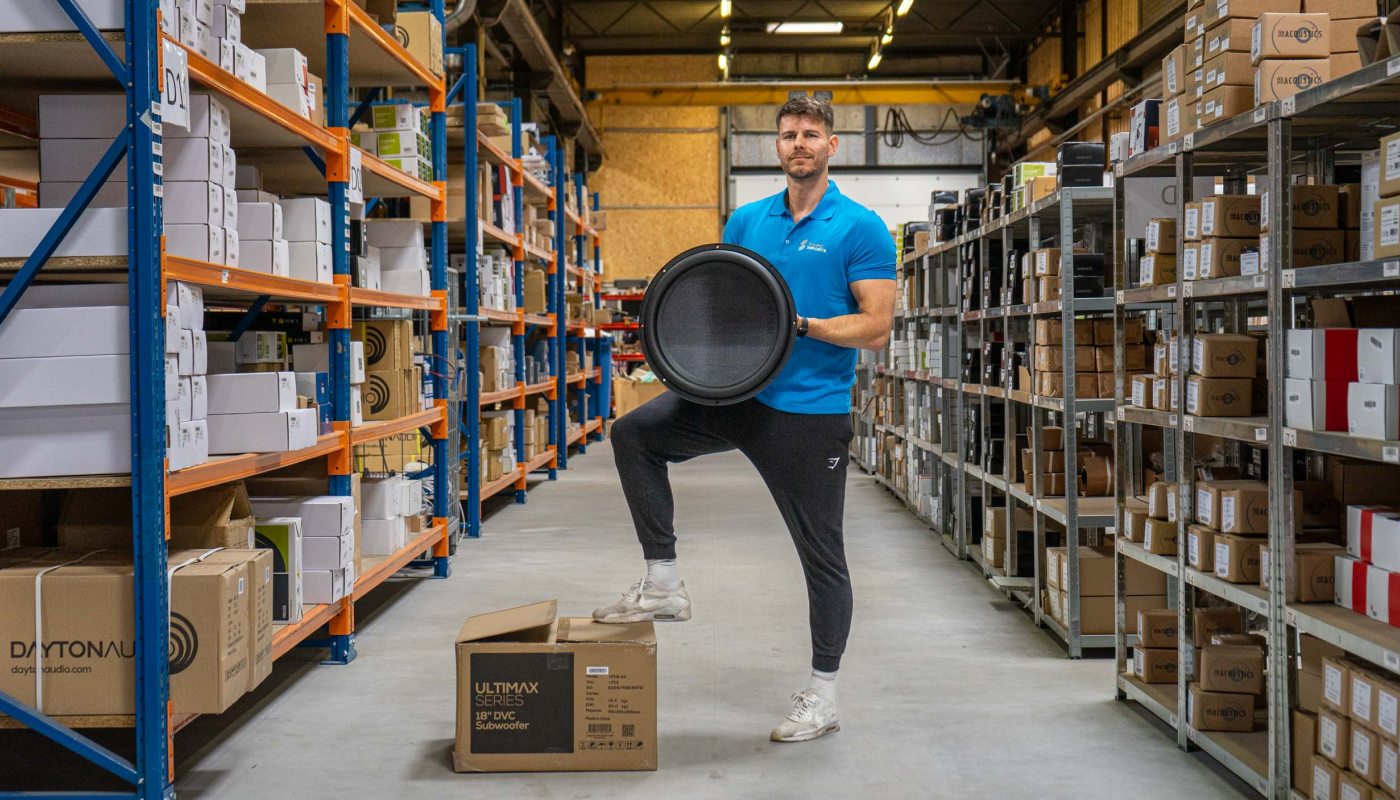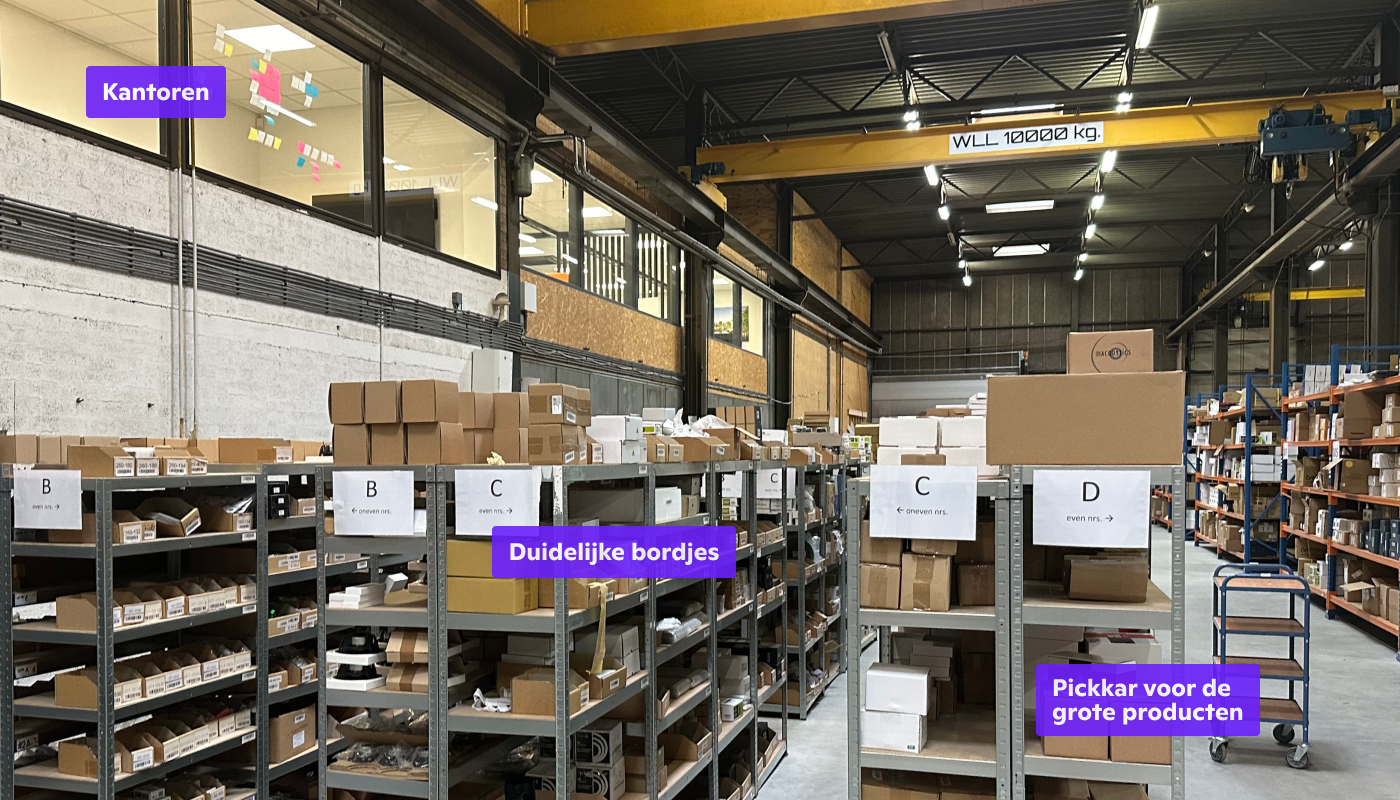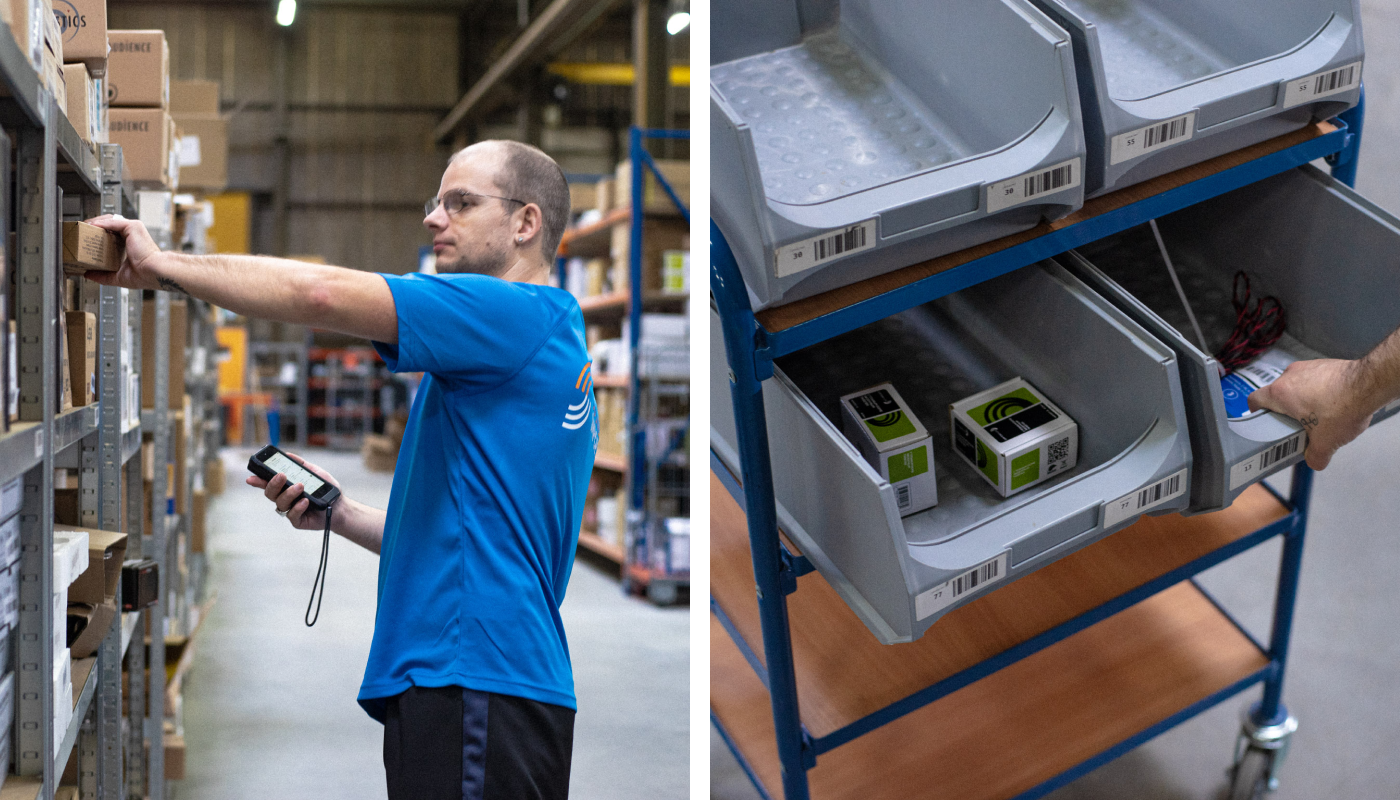A look inside the SoundImports warehouse

We regularly visit our customers to see how Picqer works in their warehouse. Recently, we were welcomed by SoundImports in Groningen. Their warehouse is filled with audio components for building your own sound systems. They started using Picqer in 2021, have grown significantly, and moved into a larger building.
We love these customer visits because they’re not just valuable for us—they’re probably valuable for you too. That’s why in this article, you can take a look behind the scenes at how another business runs their warehouse.
SoundImports at a glance
Planning the move
Before relocating, SoundImports took time to thoughtfully plan the layout of their new warehouse. That’s something we get excited about. A smart warehouse layout is the foundation for a strong process, and a strong process is essential for managing your warehouse with software. Software can’t fix process issues. SoundImports shared that they used tips from our book A warehouse to be proud of, which we were thrilled to hear. Our goal is not only to help with software, but also to share useful knowledge.
Warehouse layout
- SoundImports’ range includes everything from tiny cables and connectors to large amplifiers and speakers. Smaller items are stored in the front racks. Some are kept loose in small cardboard boxes for easy picking. Larger products are stored further back where there's more space, including pallet racks for bulky boxes.
- Fast-moving products are placed in a separate rack close to the packing stations, so staff don’t waste time walking back and forth.
- The racks are numbered like house numbers: even numbers on the left, odd numbers on the right. These location numbers are entered in Picqer, so the software knows exactly where each product is. This allows picklists to be automatically sorted in the right order for the most efficient route through the warehouse. If you’re not using software, you can sort locations in Excel to plan a good walking route.
- Locations are clearly marked with signs, making it easy to spot where you need to be.
- Separate packing stations and picking containers are used for B2C and B2B orders. Even the boxes and tape differ between the two, helping keep the workflows visibly separated.

How picking is done
- Every product has a barcode, so warehouse staff can scan items using mobile devices. No need to print paper picklists, which saves on paper and costs.
- Most picklists are processed in batches. This means many items can be picked during one round through the warehouse. Before picking starts, a batch is created in Picqer. The batch shows where each product is and how many to pick to complete all orders.
- The picking carts are adapted to product size. Large items are placed directly on the cart. Smaller items are picked using carts with bins. This makes batch picking easier, as each bin can hold the items for one order. At the packing table, the bins are processed one by one.

Making time to improve
Your warehouse deserves just as much attention as your webshop, marketing and customer service. At SoundImports, you can really see that philosophy in action. From the offices and meeting rooms, everyone can see the warehouse operations. That connection is important to them, because ideas from the office have to be executed in the warehouse.
To make sure promises to customers are realistic and achievable, they hold “Maga-Friday” every Friday. It’s a dedicated time when warehouse staff share feedback and ideas. This way, they consistently work on improvements, and everyone contributes to the business together.
Working with Picqer
Software can quickly become complex. That’s not what we want with Picqer. We focus on making it simple to use and easy to manage yourself. SoundImports is a great example of this. During the holiday season, the founder’s young daughter helped out in the warehouse. She understood Picqer so quickly that she was picking orders on her own within five minutes!
SoundImports has also built their own solutions for specific needs, such as a Chrome extension that provides automatic Picqer notifications. You can use our public API for this kind of customization. It gives you the freedom to create exactly what you need—with endless possibilities.


